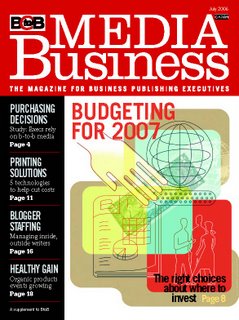Event: Indian Magazine Congress, 2007
The Indian Magazine Congress 2007 was held in Mumbai on October 8-9.
Here are some highlights:
Postal delivery: Industry veteran and publisher of Delhi Press Paresh Nath pointed out that the postal distribution system for magazines was pathetic, with some 30-40 per cent of magazines getting stolen midway.
Distribution System: Magazines were still following a distribution method that was probably right for newspapers, and this was a major concern for the industry. M.Rajagopalan Nair of ‘Malaya Manorama’ raised the problem of the dependence of magazines on newspapers vendors for distribution and the vendors’ reluctance to pick up magazines. This led to a situation where the consumer had to pick up his own copy, which he did at his own convenience.
Cover Prices: R Rajmohan, president and publisher, Images Multimedia says that rising cover prices have been an most important change as people were willing to pay for quality content.
Imbalance in ad revenue: 20 per cent of the total magazine readership lands up with 60 per cent of the total magazine ad revenue.
Read more on agencyfaqs.com
http://www.agencyfaqs.com/perl/news/index.html?sid=19331
http://www.agencyfaqs.com/perl/news/index.html?sid=19330
http://www.agencyfaqs.com/perl/news/index.html?sid=19332
Labels: Event, India, Publishing



 When Joe Mansueto purchased Inc. and Fast Company for $32.5 million in 2005, they were two publications long-neglected by their publisher. "The previous owners (Gruner & Jahr) had disinvested in the magazines,” said Mansueto, delivering the morning keynote at the Folio: Publishing Summit in Chicago. “They had lost the trust of the advertisers.”
When Joe Mansueto purchased Inc. and Fast Company for $32.5 million in 2005, they were two publications long-neglected by their publisher. "The previous owners (Gruner & Jahr) had disinvested in the magazines,” said Mansueto, delivering the morning keynote at the Folio: Publishing Summit in Chicago. “They had lost the trust of the advertisers.”
